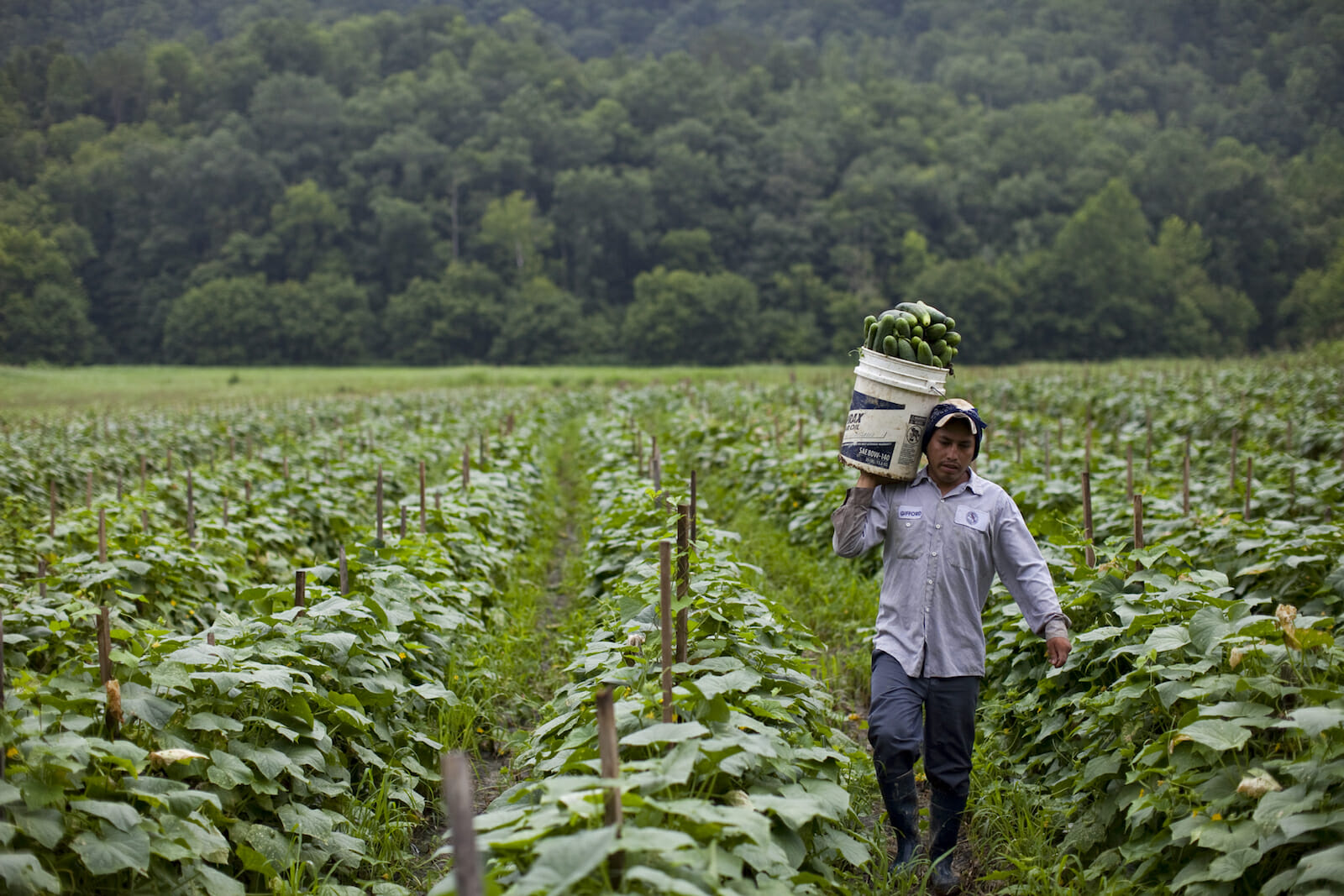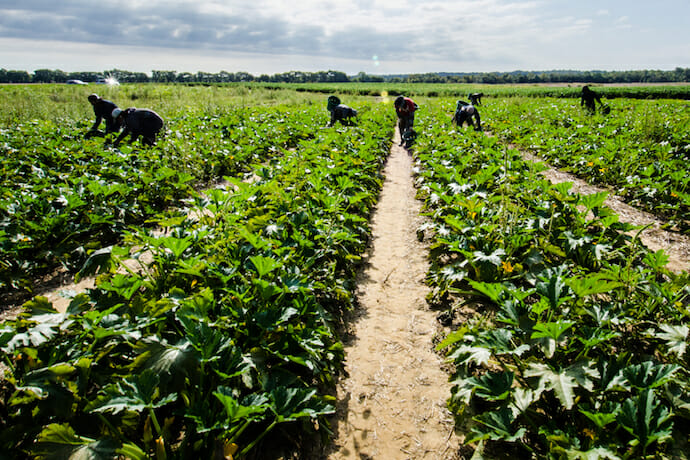
Multicultural Roots, Racism and Refugees
In the mid 1930’s, the United States faced one of the single largest migrations in the history of the nation. The Oklahoma farmer of the day was already dealing with the devastation caused by the economic boogey man whom we all still fear, and on top of that a drought was ravaging the land making farming a largely untenable practice. It was the perfect storm of conditions that caused the Dust Bowl migration, as two and a half million people simply picked up and left. Two hundred thousand headed for California, in search of a better life. How were those economic migrants received? Not well.
It remains a troubling episode in our nation’s colorful history that those who would advocate against population flows of any kind simply choose to forget. White, Christian migrants were turned away by white, Christian Californians. The LAPD famously sent 125 police officers to the border to turn away what was dubbed as the “bum brigade,” which was only stopped by the ACLU when it was later revealed that they were using city funds to do so. Can you imagine minutemen at the California border, waiting for you? Making it past the bouncers did not guarantee the migrants a desirable status. Once in California, they faced discrimination at the hands of their fellow citizens and exploitation at the hands of corporate farmers.
As migrants often do, they moved into poor neighborhoods and took low paying jobs. The created “Little Oklahoma’s,” and despite the fact that assimilation should not be an issue for someone moving from the Midwest to the west coast, they faced discrimination.
There always will be forces that resist the flow of populations. Despite the fact that people moving across the land in search of a better life are largely an uncontrollable force of nature, tribalism is an equally strong force that compels us to allow some in and keep others out. Those who would cry out against multiculturalism today, seek to completely ignore the history of our nation in a troubling variety of ways.
We have always been a multicultural nation, albeit a nation that struggles with it. If opponents are worried about opening the floodgates to masses of foreigners who will not, or cannot assimilate, that day has already passed. Foreigners are a part of the DNA of the United States.
“Little Italy,” “Chinatown,” “Koreatown,” reflect the fact that migrants largely choose to live together, at least initially, for a variety of socioeconomic reasons that do nothing to threaten the fabric of society. Furthermore, if the essential fabric of a society is so easily threatened by the inclusion of the poor, the downtrodden, or the war torn, is it really worth defending?
It is beyond reprehensible to imply that the admission ticket to the better life can only be found in giving up one’s original culture. Should migrants do their fair share to reasonably adapt to the local culture? Of course, but given how widely we disagree on what it means to be a true American, it hardly seems reasonable to mandate this legislatively.
As a nation, we are constantly redefining what it means to be an American. For many years, only White, free men were able to become citizens, leading to a somewhat hilarious redefining of what it means to be White. John Tehranian covered the topic quite well in the Yale Journal of Law. His report, titled “Performing Whiteness: Naturalization Litigation and the Construction of Racial Identity in America” outlines the almost comic way in which whiteness came to be defined in the earliest days of our nation. United States v. Thind provides a particularly shocking context through which we can view institutional attitudes towards outsiders. Bhagat Singh Thind petitioned the court for naturalization, arguing that anthropologists considered his Indian heritage as Caucasian. The court majority opinion in which Thind was denied stated, “It may be true that the blond Scandinavian and the brown Hindu have a common ancestor in the dim reaches of antiquity, but the average man knows perfectly well that there are unmistakable and profound differences between them…”

Then, as with now, the qualifications used to define what it was to be “white” were primarily driven by the ever present force of orientalism. The mysterious other perplexes the native population of the United States then and now, with the only change being that our vocabulary and reasoning veil the motivations for our couched racism much more effectively than before. Performative whiteness or concepts of whiteness continue to define the debate and drive fears that foreign refugees will not fully integrate into western society, despite overwhelming evidence to the contrary.
In fact, many backgrounds which are considered part of the mainstream American tradition at this point, chiefly Irish and German, were once decried as wholly un-American. Ben Franklin spoke at length about the influx of Germans into the colonies saying, “Those who come hither are generally of the most ignorant Stupid Sort of their own Nation…and as few of the English understand the German Language, and so cannot address them either from the Press or Pulpit, ’tis almost impossible to remove any prejudices they once entertain…Not being used to Liberty, they know not how to make a modest use of it…I remember when they modestly declined intermeddling in our Elections, but now they come in droves, and carry all before them, except in one or two Counties…In short unless the stream of their importation could be turned from this to other colonies, as you very judiciously propose, they will soon so outnumber us, that all the advantages we have will not, in My Opinion, be able to preserve our language, and even our Government will become precarious.”
As you may now be taking note, the world did not fall down around dear Benjamin’s ears, and our nation’s great multicultural tradition continued into the modern age in which an incredibly porous border with our southern neighbor led to a general osmosis of migrants that most opponents refuse to acknowledge. That is to say, migrants who come to the United States from Mexico to work do not always stay. There is a back and forth flow which is indicative of the nature of economic migration. In fact, net migration to the United States from Mexico between 2010 and 2014 was zero.
This simple fact is beside the point when we introduce policies that crack down on economic migrants from Mexico and their hiring for criminally low wages, this causes more damage to American agribusiness than anything else. Almost universally laws that crack down on hiring illegal immigrants results in fruits and vegetables rotting on the vine. And why is this? Because it has been demonstrated time and time again that these are jobs Americans simply will not do, for these wages. The low price of produce in American supermarkets rests of the backs of immigrant workers who consumers will gladly condemn in the court of public opinion. Ignoring cultural components entirely, the United States has undeniably benefitted from this massive migration.
Which brings us, of course, to Syria. The crisis of the day. How do we, as moral upstanding Americans deal with what some claim is a downright existential crisis? If you are not yet convinced of the general multicultural tradition of the United States and how foolish it is to try and define any one American tradition, you may never be. But numbers are often more compelling, and Turkey has the most compelling data set with respect to the effects of Syrian migrants of any nation.
The Center for Middle Eastern Strategic Studies released a comprehensive paper in which it explored the impact of the now nearly two million refugees who have been resettled in Turkey. The study indicates that most of the challenges of integrating such a massive number of refugees is primarily driven by misinformation. Citizens believe that Syrians are involved in crime, however, the number of cases involving Syrians is very low, and many times Syrians are the victims in those cases. Anti- Syrian sentiment is present in Turkish border cities, which in the long run can cause integration problems more than any Syrian attitudes could ever do.
Economically, the picture is wildly similar to the United States’ effort to integrate Mexican immigrants, as Turkish people claim they have lost job opportunities to Syrian immigrants, despite all evidence to the contrary. In fact, many studies indicate that the Syrian population swell has created an infusion of investment opportunity, primarily from Syrian citizens themselves who moved businesses into Turkey when fleeing their home country. The report also notes that Syrians fill major labor demands which can create a more suitable environment for individual investment; in short, more opportunities for Turkish people. Despite the challenges that Turkey now faces, the comparison of scale should dissuade any fears that opponents in the United States would have. Turkey has taken in nearly two million refugees total and the United States is likely to fall short of its promised one hundred thousand.
So what is the true American tradition? In the past, we have done everything in our power to keep outside groups from changing our culture and our way of life, and yet, slowly, inexorably, progress marches on. In this moment, in the face of human need, we can again be remembered for blustering definitions of “American” attitudes, and create an “other” for us to attack, or we can embrace our true multicultural roots and face down the challenge of a globalized era. It’s time to choose.

